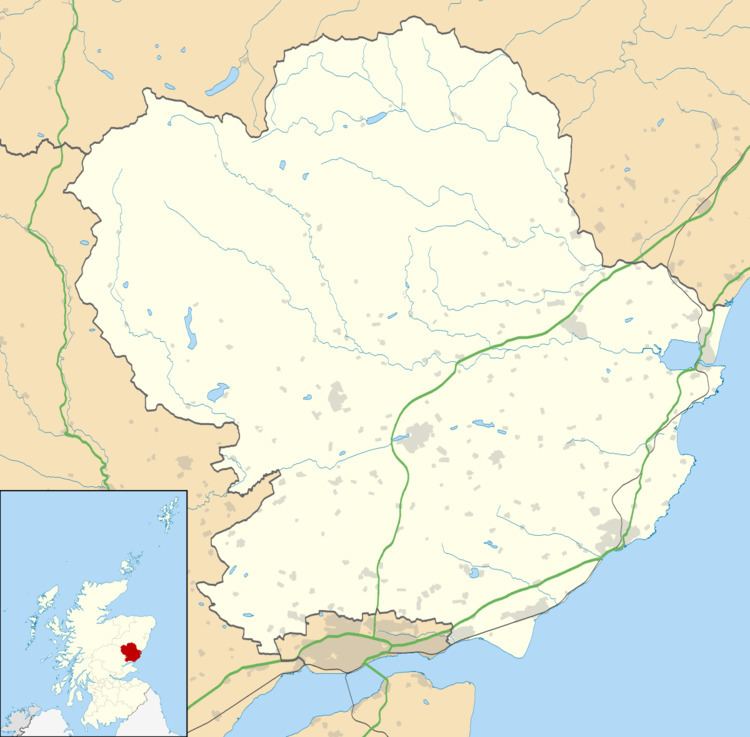OS grid reference NO602407 Sovereign state United Kingdom Postcode district DD11 Local time Tuesday 6:28 AM | Post town ARBROATH Dialling code 01241 Lieutenancy area Angus UK parliament constituency Angus | |
 | ||
Weather -1°C, Wind W at 13 km/h, 82% Humidity | ||
Arbirlot to the ness
Arbirlot (Gaelic: Obar Eilid) is a village in a rural parish of the same name in Angus, Scotland. The current name is usually presumed to be a contraction of Aberelliot or Aber-Eliot - both meaning the mouth of the Elliot. It is situated west of Arbroath. The main village settlement is on the Elliot Water, 2.5 miles from Arbroath. There is a Church of Scotland church and a primary school. The school lies 1 mile further west in the approximate geographic centre of the parish.
Contents
- Arbirlot to the ness
- Map of Arbirlot Arbroath UK
- Geology and Landscape
- History
- Notable natives and residents
- References
Map of Arbirlot, Arbroath, UK
Geology and Landscape
Arbirlot village, sometimes known as Kirkton of Arbirlot, lies in the Kelly Den, formed by the Elliot Water. The principal underlying rock formation is Old Red Sandstone and Arbirlot attracted the attention of early geologists because of the exposed rock formations in the Kelly Den. Hugh Miller describes the rock formations in the "pastoral village of Arbirlot" in detail in his highly influential 1841 book Old Red Standstone.
A nature trail by the Elliot Water links Arbirlot with the former railway junction of Elliot on the Angus Coast. Arbirlot holds host to a spectacular 23 foot waterfall.
History
There is extensive evidence of prehistoric occupation of the Arbirlot area. The First Statistical Account refers to the recent demolition of a "druidical temple" in the parish, the finding of a "Pictish crown", and the presence of numerous stone cairns. Historic Environment Scotland's Canmore database interprets the reference to the "druidical temple" as possibly referring to a stone circle and based on place-name evidence gives a possible location near to Cairncortie in the north-west of the parish. The Second Statistical Account mentions the finding of many stone arrowheads in the parish. There is a cup and ring marked boulder near Craigend.
There are cropmark indications of a possible Roman marching camp to the west of Grahamston Cottages.
The current manse garden contains a standing stone (illustrated) with what are thought to be medieval carvings. The stone was retrieved from the foundations of the parish church during re-building works in 1831.
The parish suffered from the effects of the First War of Scottish Independence in the late 13th and early 14th centuries as evidenced by the relief granted to the vicar of Arbirlot in March 1323 who was then twenty years in arrears in paying the two merks due annually to the Abbot of Arbroath Abbey. The relief was granted on the grounds of "the poverty, sterility, and destruction of the parish and its inhabitants, occasioned by the late war".
Kelly Castle (sometimes Kellie Castle or Auchterlony Castle), which overlooks the Elliot Water, comprises a four-storey tower of the late 15th or early 16th Century, set within a 19th-century courtyard. It was a stronghold of the Mowbray family until forfeited to the Stewarts in the early 14th century and was restored from a semi-ruined state by the Earl of Dalhousie in the 19th century.
In the 18th and 19th centuries Arbirlot was principally occupied by handloom weavers and farmers, Arbirlot once had a meal mill, a slaughterhouse, two schools, a post office, a savings bank, an inn, a parish library as well as a number of shops.
The parish is believed to be the original home of Clan Elliot, which was transplanted in the Scottish Borders to defend the newly crowned Robert the Bruce's Scotland from English invaders through an intricate network of peel towers. The Elliots joined the clans of Armstrong, Scott, Douglas, Kerr, Nixon, Hepburn and Maxwell in this effort. The Border Reivers and other titles such a Outlaws of the Marshes are most informative about the Elliots and their exploits after leaving the Arbirlot parish.
